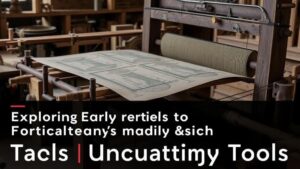Tracing Old Wagon Repair Records for Pioneer Transportation Tools
Tracing Old Wagon Repair Records for Pioneer Transportation Tools
The study of pioneer transportation and its associated tools is vital for understanding the socio-economic dynamics of early American settlement patterns. This article examines the historical significance of wagon repair records, analyzing their implications on the maintenance, durability, and evolution of pioneer transportation tools in the 18th and 19th centuries.
Introduction
The transportation landscape of early America was shaped significantly by the usage of wagons, which were essential for both agricultural and commercial activities. As settlers moved westward, the need for reliable transportation surged, leading to an intricate network of repair shops dedicated to wagon maintenance. Tracing old wagon repair records provides invaluable insights into the craftsmanship of the time, the materials used, and the implications for trade routes and local economies.
Historical Context: The Pioneers and Their Wagons
The migration of pioneers during the westward expansion (approximately 1840-1860) was instrumental in the development of the United States. The Conestoga wagon, known for its curved bed and canvas cover, was prevalent during this period. Historical records indicate that around 400,000 pioneers traversed the Oregon and California Trails in search of new opportunities.
Importance of Wagon Repair Records
Wagon repair records serve as a crucial source for understanding the maintenance of pioneer transportation tools. provide evidence of:
- Common repairs needed due to wear and tear from extensive use
- The supply chains of materials, including wood, iron, and leather
- Economic conditions affecting the costs of repairs
For example, a repair invoice from a wagon shop in St. Louis dated 1865 indicates that wheel rims cost approximately $2.50, a considerable amount in that period, reflecting the value placed on maintaining mobility for settlers.
Methodology of Tracing Records
To trace wagon repair records, historians typically employ a combination of archival research, analysis of primary sources, and oral histories. Key steps include:
- Archival Research: Investigating local historical societies, state archives, and libraries to access old ledgers and invoices.
- Primary Sources: Utilizing diaries, letters, and newspapers from the era to provide context to repair records.
- Oral Histories: Collecting stories from descendants of pioneers to uncover forgotten practices.
Case Study: The Oakley Wagon Repairs
A significant case study involves the Oakley Wagon Shop, operational from 1835 to 1880 in Pennsylvania. Records from this shop reveal that repairs on wagon wheels constituted 60% of their business, underscoring the importance of wheel maintenance.
In one instance, a record from 1850 documents the repair of wheels for a Conestoga wagon, detailing labor charges amounting to $3.00 and parts that included new spokes, costing 25 cents each. This record provides insight not only into the costs involved but also the craftsmanship and attention to detail necessary for successful wagon operation.
Impacts on Modern Understanding
Tracing old wagon repair records informs modern scholars about the logistical facets of pioneer life. Analyzing this data can yield insights into:
- Economic models based on transportation needs and repair frequency
- Social structures surrounding trade and commerce in pioneer settlements
- Technological advancements in wagon manufacturing and design over time
Conclusion
Old wagon repair records act as a window into the past, revealing the complexities of pioneer transportation. By documenting the maintenance practices and economic realities of wagon repairs, historians can better appreciate the challenges faced by early settlers. Such studies not only honor the legacy of these pioneers but also provide actionable insights into the logistical frameworks that shaped America’s development.
As modern historians continue to explore these records, they unveil anthropological reflections of resilience and adaptability that characterized the spirit of American pioneer life.


